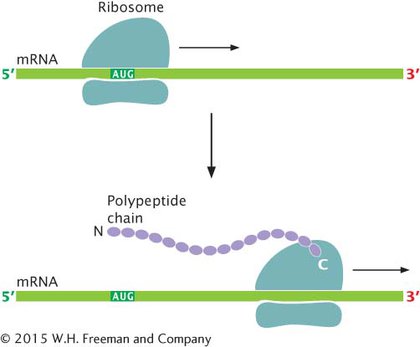11.2 Amino Acids Are Assembled into a Protein Through Translation
Now that we are familiar with the genetic code, we can study how amino acids are assembled into proteins. Because more is known about translation in bacteria than in eukaryotes, we will focus primarily on bacterial translation. In most respects, eukaryotic translation is similar, although some significant differences will be noted.
Remember that only mRNAs are translated into proteins. Translation takes place on ribosomes; indeed, ribosomes can be thought of as moving protein-

Protein synthesis can be conveniently divided into four stages: (1) tRNA charging, which entails the binding of amino acids to tRNAs; (2) initiation, in which the components necessary for translation are assembled at the ribosome; (3) elongation, in which amino acids are joined, one at a time, to the growing polypeptide chain; and (4) termination, in which protein synthesis halts at the termination codon and the translation components are released from the ribosome.